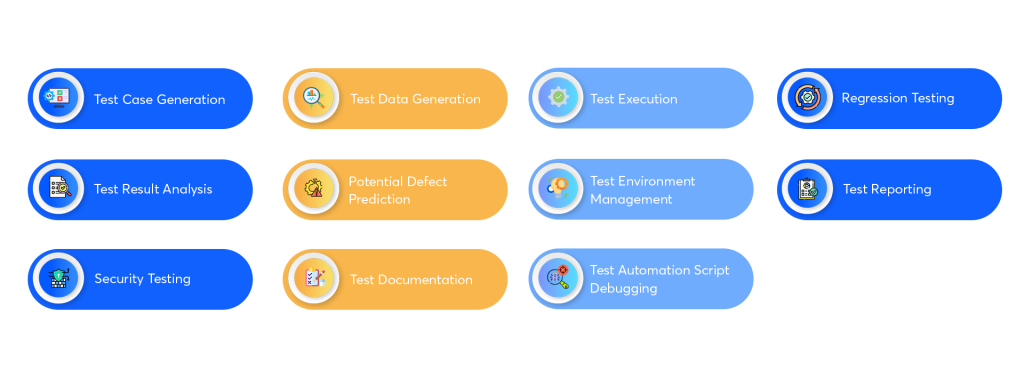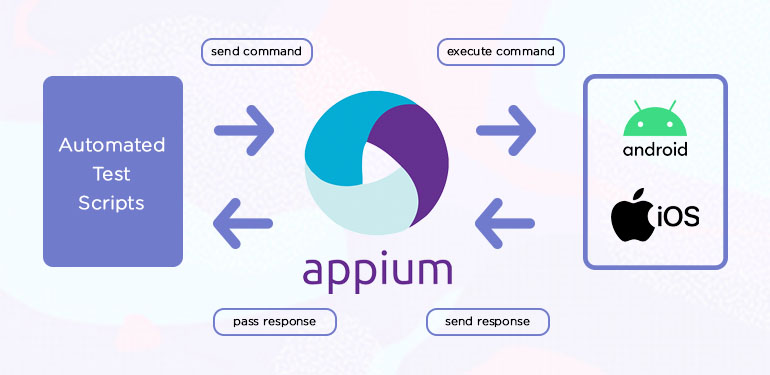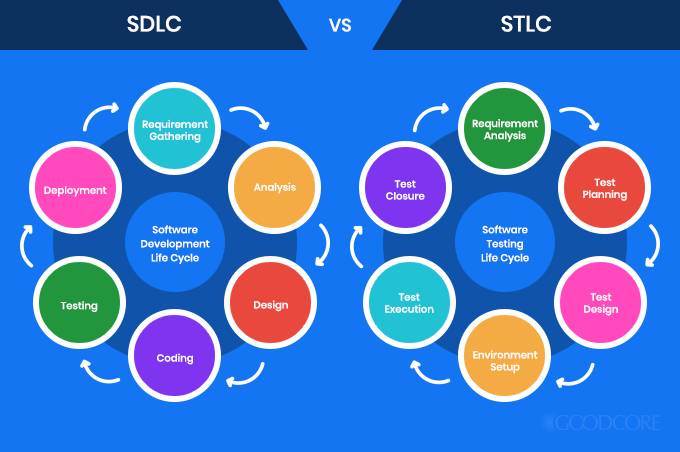Intuitive user journeys are at the core of aesthetic, functional, and impactful products. It’s simple: if users find it easy to use & navigate, and get to experience bug-free, secure software, they will be your happy customers. The way to achieve that is by ensuring that as your software goes through different development phases, all the quality standards are maintained. The easiest way to do that is to hire an outsourced QA partner.
Quality assurance (QA) testing guarantees the best user experience under secure conditions that protect users from hackers attempting to access their private information. While the developers make changes on the back-end of the software, QA testers ensure that the front-end experience is unaltered and functions properly. Now there are two ways to have a team for QA onboard: hire an in-house team, or outsource QA testing to an external team. It is deemed best in many scenarios to outsource QA if you do not have the best resources in-house. In this blog, I’m going to discuss the best ways you can manage your outsourced QA team, and how can it benefit your business.
Quality assurance is a practical solution for catching the major and minor errors before the product is released to the client, and hence, the people who are actually going to be using that product. Most of the time, the in-house staff does not have the time or resources necessary for comprehensive and complete QA testing, which leads to small errors leaking into the end product and becoming major issues. This leads many companies to outsource QA activities.
There are many benefits of outsourcing QA testing, including lower costs, highly skilled workers, and improved products. The outsourced QA vendor may have many industry-leading tools that can help release a good quality product. However, you should outsource your quality assurance testing strategically to ensure maximum output.
If I list down some of the pros and cons of outsourcing a QA team, they could be as follows:
Pros:
- Lowered costs of dedicated resources
- Focused & expert resources for QA testing
- Save team management time
Cons:
- Miscommunication occurs as teams aren’t co-located
- Disturbance of delivery deadline(s) due to broken workflow coordination
- Risk of privacy & confidentiality breach
What’s the best way to tackle these issues? One word: Outsourcing QA. There are a number of companies around the world that outsource their QA teams to businesses that are in need of a short-term QA engagement. It is becoming popular with global businesses, obtaining more marketability as it evolves into a complete, standalone industry. QA outsourcing has been in practice for a long time, and its prevalence depends on the value it offers to the customers, as well as the practicality of the business model. It is still very early to comment on how far QA outsourcing can build its foundation, as a whole separate service in the industry, but it will not be wrong to say that the stats are showing a promising future.
Choose the right outsourced QA partner
The success of your product is determined by how smoothly it runs, and quality assurance process plays a major role in it. So, it makes sense that you choose a QA vendor that agrees with your company’s vision, mission, and goals. When it comes to onboarding a vendor for your project or business, you need to go for the one that works in line with your business model, work practices and one that owns their work. In addition, there are a number of factors that you have to keep in mind when conducting market research for potential candidates for outsourcing. I’ve compiled a few of these below:
Cost-effective
The most common factor that urges businesses to outsource resources is the reduction in cost. However, don’t let this factor let you choose a firm based solely on the lowest price. Here’s where you need to be objective, go out into the market, do your research extensively and then decide. Always keep in mind: you don’t want to compromise on quality.
Reliability & expertise
When choosing a vendor, it’s good to pay attention to the vendor’s references and success stories. A good vendor respects processes and documentation (test planning, test strategy, testing scenarios, cases & reports), provides access to test artifacts & templates. You can always judge a vendor’s competence by analyzing the skill set of the resources provided to you, their experiences with different companies and the number of successful project deliveries.
Availability of resources & services
Before finalizing a vendor, make sure that your outsourcing partner has around double the testers on their bench than your requirement, and that bench is managed effectively. Your partner should be an expert in performing all types of testing (manual, automated, web, mobile desktop, functional, performance, usability & compatibility, security, and API, etc.), so they may cater to your needs as your projects scale up.
Self-management
The motivation behind outsourcing, for businesses, is to contract out the time consuming & conscientious testing processes to a qualified external team, so they can focus on high-level quality management, code creation, and software design. From assistance with developing specified requirements to continuous testing during the whole application life cycle, a vendor should be self-managed to cover everything that comes under an efficient QA process. In addition, you need to ensure that there is an assigned QA manager on the vendor’s side so all related questions are addressed to the responsible person.
Understand who you’re working with
Like any business partnership, it is essential to understand who you’re engaging with. You need to know the other party before letting them in on the inside workings of your organization, and your trade secrets. The core of vendor management lies in understanding what drives your vendors. A QA vendor experiences constant pressure, operational costs, talent acquisition challenges, problems with other projects. Thus, you should keep in mind that excessive demands for price discounts may result in insufficient resource allocation to your project – the vendor may try to reduce the price by cutting their actual expenses (e.g. assigning insufficient or inexperienced staff, etc.).
Another thing to remember is, never dread to share information with your testing vendor (as much as the non-disclosure agreement (NDA) allows for). To deliver high-quality testing services, an outsourced team needs to understand your software, business, specific technical requirements, and user experience.
Choose a vendor that provides you a demonstration of their services followed by a report of presenting its methodology and the demonstration of test results. It’s the best way to understand the vendor and create a relationship based on trust and confidence.
Check-in with your vendor regularly
Assessing an outsourced QA vendor systematically helps ensure that your company gets exactly what you have aimed for. Thus, if the quality of service provided by your vendor doesn’t live up to the mark, you can promptly take necessary actions to mitigate them and ensure your targets are achieved.
QA performance management
In order to keep track of the team’s progress, it is essential to monitor how far and how well has the assigned project or software been developed. The smooth working of the deliverable will show if QA is performing well or needs to be redirected. Essentially, an outsourced QA team’s performance is evaluated based on the following criteria:
- Number of missed bugs or bugs slipped into production
- Quality of defect description (bug reporting)
- Correlation between testing efforts and outcomes
- Efficient use of testing tools
- Quality of testing documents
Is working with multiple vendors a good idea?
Hiring multiple vendors for multiple tasks can become hard to manage, and it’s seldom beneficial. It’s not cost-effective and there could be regular conflicts of interest. It’s better to hire a single skilled vendor rather than hiring multiple vendors and work closely with them. Regular performance assessments of the vendor can help in determining if your target is achieved or not, and if the vendor performance is not up to the mark, you can start searching for a better vendor.
For a situation like this, it’s better to have a list of vendors always ready with you. If at any point, you see that the team may not be performing up to the mark, you can always take a supplementary team onboard to pick up the lags.
Keep your outsourced QA partners happy
The quality of a team’s output is directly proportional to the satisfaction they have in fulfilling the demands of your business. It’s basic human nature; once you feel appreciated and valued at work, you put in more effort and hard work into your work, and never hesitate to go that extra mile to make brilliance happen. So, as a business, it depends on how you make your teammates feel; it is important that they know the importance of their role and the value they’re adding to your business. When your team works hard and is recognized as an integral part of your success, it develops a work-family culture and removes any alienation stemming from them being an outsourced contractor. I’ll conclude with a few pointers on how you can keep your outsourced team happy.
- Give them a clear idea of your objectives and business
- Respect them and their knowledge and skills set
- Provide them training and constant coaching
- Make ample room for the learning curve
- Provide required infrastructure
- Respect their values, culture, and time
- Provide a budget for rewards and benefits for overtime hours
- Recognize their achievements
- Pay them well
Stepping towards success
We all know that technology is advancing across industries. Why not go ahead and apply it to your team management as well? You can leverage technology like video chats for regular sync-ups with your outsourced team. In order to make sure that everyone is following the same playbook rules, you need to help your outsourced team understand your business goals and workings. Once that’s clear, a well-established vendor would work with you according to your ways. Lastly, respect is an essential factor when two teams are from different cultures or are not located in the same place. Be it respect for their time zones, or using a certain project management software, both teams need to show mutual respect to ensure successful project delivery.












